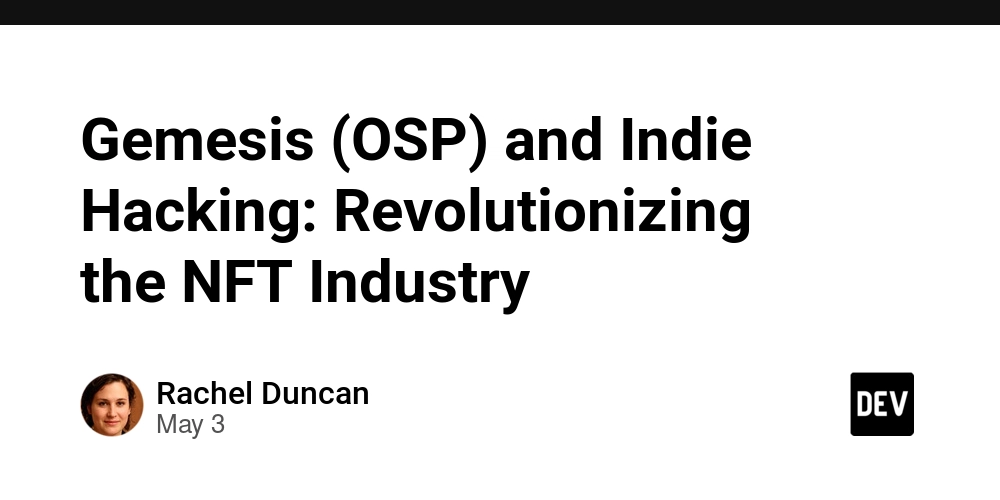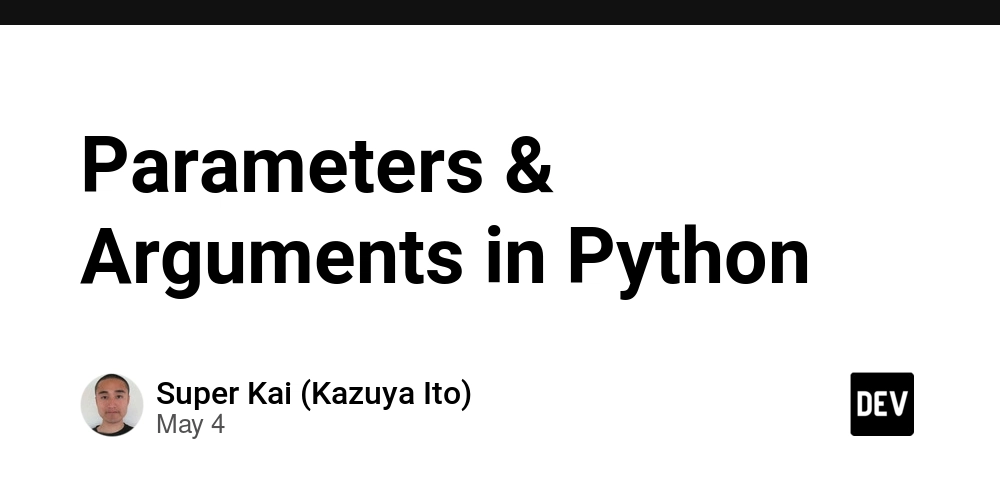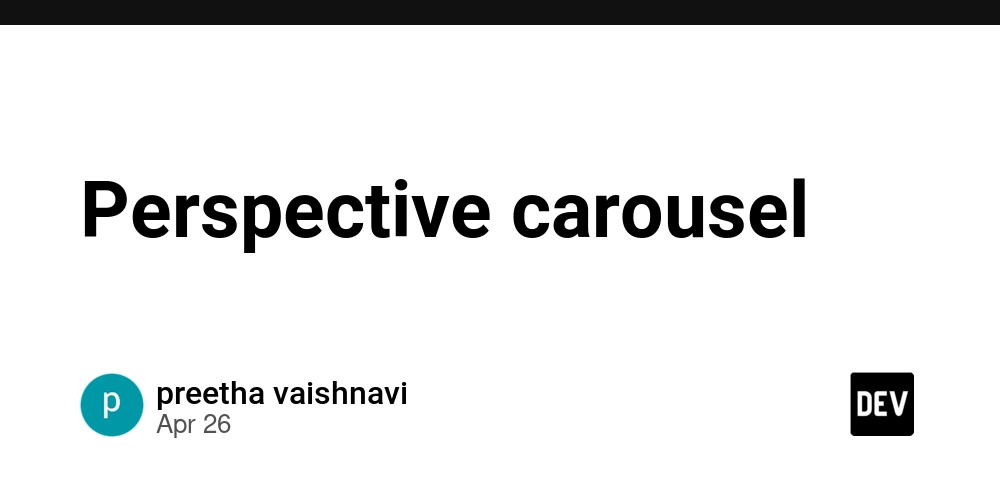Gemesis (OSP) and Indie Hacking: Revolutionizing the NFT Industry
Abstract: In this post, we explore how Gemesis, a groundbreaking open-source platform (OSP), is energizing the NFT scene through indie hacking. We discuss the fundamentals of non-fungible tokens, the technological backbone that supports decentralized creative ecosystems, and how Gemesis empowers indie creators. In addition, we examine challenges, use cases, and future innovations in the NFT ecosystem. With technical insights balanced with accessible language, this guide offers an in-depth look at how decentralization, open-source collaboration, and sustainable blockchain practices are reshaping digital ownership and creative funding. Introduction The NFT industry is in the midst of a transformative revolution. At its core lie two crucial elements: groundbreaking technology and a spirit of indie creativity. Gemesis is a platform that embodies both by leveraging open-source software and decentralization to empower indie developers, creators, and collectors. In this post, we dive into the world of Gemesis (OSP) and indie hacking. We discuss how merging innovation with community-driven projects is not only democratizing NFT creation but also paving the way for sustainable digital assets. For more details on this emerging subject, read the original article on Gemesis and Indie Hacking. Background and Context Understanding NFTs and Blockchain Non-Fungible Tokens (NFTs) represent unique digital assets confirmed via blockchain technology. Unlike cryptocurrencies, each NFT is distinct and indivisible, ensuring originality and digital ownership. To learn more about how NFT technology works, consider reading this primer on NFTs by Investopedia. NFTs have found applications in art, music, gaming, and digital media, transforming industries by securing transparent ownership records. Blockchains such as Ethereum and Arbitrum serve as the backbone for these technologies. The move towards decentralization—as explained in Coindesk’s overview—has played an instrumental role in disrupting traditional funding and creative distribution models. The Genesis of Gemesis and Indie Hacking Gemesis leverages the power of open-source collaboration to address the limitations often seen in NFT marketplaces. As an open-source platform (OSP), Gemesis invites developers and creators to contribute, innovate, and build sustainable projects together. The platform exemplifies how indie hacking—an approach that emphasizes self-funded, independent innovation—can lead to new forms of digital creativity. Indie hacking is more than a trend; it’s a paradigm shift. Creators now have the ability to independently mint NFTs, engage directly with their communities, and bypass traditional intermediaries. This approach not only fosters innovation but also promotes accessibility, community empowerment, and transparency. Forbes highlights how accessibility in tech can empower traditionally underserved communities, making these digital innovations more inclusive. See more on this topic here. Ecosystem and Key Terminology Below is a table that outlines the key components of this evolving ecosystem: Component Description Key Benefits NFTs Unique digital assets safeguarded by blockchain. Provenance, authenticity, and exclusivity. Gemesis (OSP) An open-source platform promoting indie creativity in the NFT space. Transparency, collaboration, and sustainability. Indie Hacking A DIY approach encouraging creators to build and monetize their own products without intermediaries. Autonomy, innovation, and personal branding. Decentralization Distributing power away from central authorities, ensuring transparency and community governance. Security, resilience, and democratic control. Blockchain A digital ledger technology that records transactions immutably. Accountability, security, and transparency. Core Concepts and Features Decentralization and Open-Source Collaboration Gemesis uses a decentralized framework to bring together a community of creators, developers, and collectors. This reinforces core values such as transparency, sustainability, and innovation. Key features of the platform include: Decentralized Governance: Decision-making is distributed among community members, reducing centralized control. More details are available in this guide on decentralization. Open Source Licensing: By embracing open-source collaboration, Gemesis encourages developers to contribute to codebases, ensuring improvements and rapid iteration. For a deeper insight into open source, check out this resource on Open Source Collaboration. Sustainable Practices: Gemesis integrates environmentally friendly blockchain practices to address concerns such as excessive energy usage. For broader context on these practices, see this discussion on sustainable blockchain practices. The Role of Indie Hacking in the NFT Space Indie hacking is defined as the act of building a

Abstract:
In this post, we explore how Gemesis, a groundbreaking open-source platform (OSP), is energizing the NFT scene through indie hacking. We discuss the fundamentals of non-fungible tokens, the technological backbone that supports decentralized creative ecosystems, and how Gemesis empowers indie creators. In addition, we examine challenges, use cases, and future innovations in the NFT ecosystem. With technical insights balanced with accessible language, this guide offers an in-depth look at how decentralization, open-source collaboration, and sustainable blockchain practices are reshaping digital ownership and creative funding.
Introduction
The NFT industry is in the midst of a transformative revolution. At its core lie two crucial elements: groundbreaking technology and a spirit of indie creativity. Gemesis is a platform that embodies both by leveraging open-source software and decentralization to empower indie developers, creators, and collectors. In this post, we dive into the world of Gemesis (OSP) and indie hacking. We discuss how merging innovation with community-driven projects is not only democratizing NFT creation but also paving the way for sustainable digital assets.
For more details on this emerging subject, read the original article on Gemesis and Indie Hacking.
Background and Context
Understanding NFTs and Blockchain
Non-Fungible Tokens (NFTs) represent unique digital assets confirmed via blockchain technology. Unlike cryptocurrencies, each NFT is distinct and indivisible, ensuring originality and digital ownership. To learn more about how NFT technology works, consider reading this primer on NFTs by Investopedia.
NFTs have found applications in art, music, gaming, and digital media, transforming industries by securing transparent ownership records. Blockchains such as Ethereum and Arbitrum serve as the backbone for these technologies. The move towards decentralization—as explained in Coindesk’s overview—has played an instrumental role in disrupting traditional funding and creative distribution models.
The Genesis of Gemesis and Indie Hacking
Gemesis leverages the power of open-source collaboration to address the limitations often seen in NFT marketplaces. As an open-source platform (OSP), Gemesis invites developers and creators to contribute, innovate, and build sustainable projects together. The platform exemplifies how indie hacking—an approach that emphasizes self-funded, independent innovation—can lead to new forms of digital creativity.
Indie hacking is more than a trend; it’s a paradigm shift. Creators now have the ability to independently mint NFTs, engage directly with their communities, and bypass traditional intermediaries. This approach not only fosters innovation but also promotes accessibility, community empowerment, and transparency. Forbes highlights how accessibility in tech can empower traditionally underserved communities, making these digital innovations more inclusive. See more on this topic here.
Ecosystem and Key Terminology
Below is a table that outlines the key components of this evolving ecosystem:
| Component | Description | Key Benefits |
|---|---|---|
| NFTs | Unique digital assets safeguarded by blockchain. | Provenance, authenticity, and exclusivity. |
| Gemesis (OSP) | An open-source platform promoting indie creativity in the NFT space. | Transparency, collaboration, and sustainability. |
| Indie Hacking | A DIY approach encouraging creators to build and monetize their own products without intermediaries. | Autonomy, innovation, and personal branding. |
| Decentralization | Distributing power away from central authorities, ensuring transparency and community governance. | Security, resilience, and democratic control. |
| Blockchain | A digital ledger technology that records transactions immutably. | Accountability, security, and transparency. |
Core Concepts and Features
Decentralization and Open-Source Collaboration
Gemesis uses a decentralized framework to bring together a community of creators, developers, and collectors. This reinforces core values such as transparency, sustainability, and innovation. Key features of the platform include:
- Decentralized Governance: Decision-making is distributed among community members, reducing centralized control. More details are available in this guide on decentralization.
- Open Source Licensing: By embracing open-source collaboration, Gemesis encourages developers to contribute to codebases, ensuring improvements and rapid iteration. For a deeper insight into open source, check out this resource on Open Source Collaboration.
- Sustainable Practices: Gemesis integrates environmentally friendly blockchain practices to address concerns such as excessive energy usage. For broader context on these practices, see this discussion on sustainable blockchain practices.
The Role of Indie Hacking in the NFT Space
Indie hacking is defined as the act of building and launching products without the backing of large institutions. Gemesis is a perfect match for indie hackers because it enables:
- Direct NFT minting and on-chain monetization.
- Seamless integration with community-driven feedback loops that drive continuous improvement.
- Enhanced personal branding as creators directly engage with their audience.
For more on the indie hacking movement, visit IndieHacker's community hub.
Technical Components
Gemesis employs several robust technical components to support its ecosystem. Some technical highlights include:
- Smart Contracts: Automated contracts on the blockchain reduce the need for intermediaries and enforce trust.
- Interoperability: The platform supports cross-chain transactions that allow NFTs to move between different blockchain networks. Read more about blockchain interoperability on Arbitrum and Blockchain Interoperability.
- Scalability Solutions: Addressing issues like high transaction fees and congestion on networks like Ethereum, solutions such as layer-2 rollups enhance user experience. For further details on these challenges, refer to Arbitrum Rollups.
Applications and Use Cases
The revolutionary combination of Gemesis and indie hacking has opened up new avenues in the NFT world. Below are a few practical examples:
- Digital Art and Collectibles: Artists can mint NFTs independently, reducing barriers to entry, and capture royalties for secondary sales. This model places creative control firmly in the hands of the artist.
- Gaming Assets: Game developers and indie studios can use the Gemesis platform to tokenize unique in-game assets, allowing for seamless trading, enhanced player ownership, and innovative gameplay mechanics.
- Community Funding Models: Many open-source and creative projects have adopted crowdfunding strategies similar to indie hacking. Platforms like GitHub Sponsors play a similar role in promoting financial independence for developers. See more about funding indie projects in Indie Hacking Success Stories.
A Bullet List of Key Use Cases
- Independent NFT Minting: Artists and creators mint their work without traditional intermediaries.
- Enhanced Monetization: Direct monetization strategies allow for immediate revenue generation.
- Cross-Chain Marketplaces: NFTs can be traded across different blockchains seamlessly.
- Decentralized Community Governance: Collective decision-making processes help steer the platform in a democratic direction.
- Sustainable Digital Ownership: Environmentally friendly practices ensure that the NFT ecosystem remains viable long-term.
Challenges and Limitations
While the potential of Gemesis and indie hacking is immense, several challenges remain.
Technical Complexities
- Scalability Issues: With increased adoption, blockchain networks sometimes face congestion and high gas fees. Although layer-2 solutions help, the problem is not entirely resolved.
- Security Concerns: Smart contracts must be robust to prevent vulnerabilities. Regular audits and community reviews become essential.
- Interoperability: Seamless interaction between multiple blockchains is complex, though platforms like Gemesis are continuously evolving towards better interoperability.
Adoption Challenges
- Market Saturation: The NFT space remains highly competitive. Ensuring authenticity while battling fraud is key. For challenges surrounding market saturation, visit Decrypt’s resource on NFT market saturation.
- Environmental Impact: Although sustainable practices are being adopted, blockchain energy consumption remains a concern.
- User Education: Many potential users are unaware of the technicalities behind NFTs. Increased educational initiatives are necessary for broader adoption.
Governance and Legal Aspects
The decentralized nature of Gemesis means that regulatory oversight and legal frameworks are still evolving. It is crucial for platforms to remain compliant, transparent, and adaptable to regulator demands over time.
Future Outlook and Innovations
The future of Gemesis and the NFT ecosystem looks promising, with numerous trends on the horizon.
Trends and Predictions
- Improved Interoperability: Enhanced multi-chain solutions are likely to emerge, making cross-platform NFT trading more accessible.
- Environmental Efficiency: The trend toward more sustainable blockchain practices will likely drive new protocols that minimize energy wastage.
- Enhanced Community Governance: As more projects adopt decentralized governance, community decisions will be central to innovation in the NFT space.
- Integration with DeFi: We expect further integration of decentralized finance (DeFi) concepts, enabling creators to utilize NFTs as collateral or for yield farming.
- Expansion of Indie Hacking Initiatives: With an improved developer ecosystem and available funding, more indie projects will leverage open-source technologies.
Innovations on the Horizon
Several developments are poised to redefine the NFT landscape:
| Innovation | Potential Impact |
|---|---|
| Layer-2 Scaling Solutions | Reduced gas fees and enhanced transaction speeds, making NFT trading more user-friendly. |
| Cross-Chain NFT Protocols | Greater interoperability across blockchain networks, increasing liquidity and market access. |
| Decentralized Autonomous Organizations (DAOs) | Enable collective decision-making and funding, driving a more democratic future for NFT projects. |
| Enhanced NFT Royalties | Automated royalty payments through smart contracts, ensuring continuous revenue for creators. |
Collaboration with the Developer Community
Several influential voices on platforms like Dev.to have already contributed to this evolving discussion. For example:
- Elon Musk’s Open Source Revolution in the NFT Landscape explores how high-profile innovators inspire open-source projects.
- Navigating Blockchain Project Funding and Token Distribution offers insights into the financial structures behind these decentralized platforms.
- The Future of Fragment Telegram delves into how communication tools could further empower indie communities.
As these discussions continue, the collaborative spirit of indie hacking will be key to overcoming the remaining challenges.
Summary
Gemesis represents a pioneering leap in the NFT industry—an intersection of open-source brilliance and the indie hacking ethos. Through decentralization, robust technical infrastructure, and innovative community governance, Gemesis is leading a sustainable shift in digital asset creation and monetization.
Key Points to Remember:
- NFTs are unique digital assets that fundamentally change our approach to digital ownership.
- Gemesis (OSP) leverages open-source, decentralized technology to empower indie creators.
- Indie Hacking offers the freedom to innovate and monetize without traditional intermediaries.
- The platform addresses challenges in scalability, security, and regulatory compliance through smart contract innovation and community governance.
- The future holds promise with improved interoperability, enhanced environmental sustainability, and deeper integration with DeFi.
As the blockchain and NFT ecosystems continue to evolve, embracing open collaboration and sustainable practices will be paramount. Gemesis is not only shaping the future of digital art and assets but also redefining how creators interact with their audiences. With robust technical underpinnings, community engagement, and an eye towards sustainable growth, the platform embodies the spirit of the new digital era—one where indie hacking is at the forefront of innovation and creative expression.
Concluding Thoughts
In conclusion, Gemesis has emerged as a catalyst in revolutionizing the NFT space. Its open-source nature and commitment to indie hacking empower creators to realize their visions without the constraints of traditional intermediaries. By harnessing blockchain’s decentralization and fostering community-led initiatives, it bridges the gap between technology and artistic freedom.
This blog post has delved into the abstract ideas, technical specifics, real-world applications, and future directions of Gemesis and indie hacking within the NFT industry. For more detailed discussions and continuous updates, readers are encouraged to explore related topics such as NFT and Digital Ownership and Open Source NFT Platforms for Indie Projects.
By continually engaging in open dialogue, sharing best practices through developer communities, and advancing technical innovation, platforms like Gemesis are driving the next generation of digital creativity. Stay tuned as the realms of decentralization, NFT monetization, and indie hacking continue to redefine the creative economy.
Thank you for reading! Whether you are an indie hacker, developer, or NFT enthusiast, the convergence of technology and creativity promises a future filled with endless possibilities.
Feel free to share your thoughts and experiences in the comments, and check out more discussions on open-source funding and blockchain innovations on Dev.to and other related sources.
Happy innovating and stay decentralized!





































































































































































![[The AI Show Episode 145]: OpenAI Releases o3 and o4-mini, AI Is Causing “Quiet Layoffs,” Executive Order on Youth AI Education & GPT-4o’s Controversial Update](https://www.marketingaiinstitute.com/hubfs/ep%20145%20cover.png)




























































































































![[DEALS] Microsoft 365: 1-Year Subscription (Family/Up to 6 Users) (23% off) & Other Deals Up To 98% Off – Offers End Soon!](https://www.javacodegeeks.com/wp-content/uploads/2012/12/jcg-logo.jpg)




![From Art School Drop-out to Microsoft Engineer with Shashi Lo [Podcast #170]](https://cdn.hashnode.com/res/hashnode/image/upload/v1746203291209/439bf16b-c820-4fe8-b69e-94d80533b2df.png?#)








































































































(1).jpg?#)































_Inge_Johnsson-Alamy.jpg?width=1280&auto=webp&quality=80&disable=upscale#)












































































































![Apple to Split iPhone Launches Across Fall and Spring in Major Shakeup [Report]](https://www.iclarified.com/images/news/97211/97211/97211-640.jpg)
![Apple to Move Camera to Top Left, Hide Face ID Under Display in iPhone 18 Pro Redesign [Report]](https://www.iclarified.com/images/news/97212/97212/97212-640.jpg)
![Apple Developing Battery Case for iPhone 17 Air Amid Battery Life Concerns [Report]](https://www.iclarified.com/images/news/97208/97208/97208-640.jpg)
![AirPods 4 On Sale for $99 [Lowest Price Ever]](https://www.iclarified.com/images/news/97206/97206/97206-640.jpg)

































![[Updated] Samsung’s 65-inch 4K Smart TV Just Crashed to $299 — That’s Cheaper Than an iPad](https://www.androidheadlines.com/wp-content/uploads/2025/05/samsung-du7200.jpg)


































































